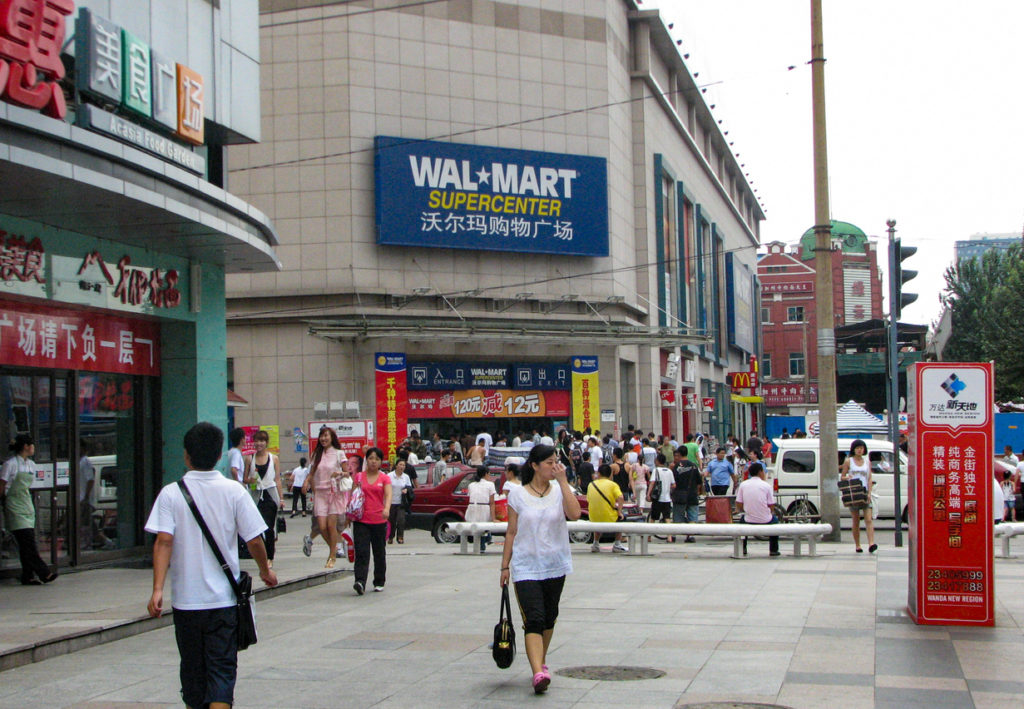Why major American corporations have struggled in China: Walmart
Why major American corporations have struggled in China: Walmart

This article is part of a series about the importance of cross-cultural design, the first three installments of which have been published earlier this month. Keep an eye out for the rest of the series during February 2017.
Walmart in America could be viewed as a company trying to monopolize a large part of American life and many joked as it moved to China that it was trying to take over the world. Regardless of whether its plans were world domination or simply the more likely attempt at higher profits for shareholders, it was at first unsuccessful in its attempt to capture a native Chinese audience. This continued for many years until it started to figure things out.
See Also: Is retail sector ready for IoT investments?
According to Walmart’s corporate website for China, it first launched into China by opening one of its superstores in Shenzhen in 1996. Walmart China continued to struggle for many years after this opening and made some of the same critical mistakes that have been witnessed too many times from American companies trying to expand.
First, Walmart disturbed the political atmosphere. Many horror stories are told in the United States about the restrictive government of China. These stories have varying levels of truth to them. Yet many American companies could do themselves a favor by following the guideline that “When in China, do as the Chinese politicians want you to.” In one instance, Walmart China’s sale of a certain prohibited product in China had local and federal governments actually shut down its citywide operations in Chongqing for a period of time.
Beyond directly disturbing the political atmosphere, Walmart has been putting the government in an awkward position starting in 2013 when labor activists began to speak out against Walmart China. It is not uncommon for the central Chinese government to arrest labor activists, but the Communist party has been staying far away from Walmart’s issues as they do not want to side with Walmart China. Doing so may cause local labor to rise up in protest against the government, since the government would be supporting foreign business over its citizens. On the other hand, the government does not want to support the labor protesters either, as this might encourage more labor protests and scare away foreign companies. The government resents Walmart China for putting them into such a position.
The approach is hard to understand
Walmart China actions are a little difficult to understand. It pays its workers an average of $ 300 USD per month and refused workers’ demands for higher wages, even though the workers were asking for modest wage improvements. Walmart China probably could afford to as much as double every single worker’s salary. Roughly speaking, even if it had as many as 100,000 employees in China, it would cost $ 30 million USD per month to double every worker’s salary, which is a fairly modest percentage of Walmart’s over $ 1 billion USD per month in global profits. It seems this would be a worthwhile investment for Walmart China in order to improve its relations with both the people and the government of China.
In addition to the political feathers Walmart China has ruffled, it also clearly has failed to understand the Chinese consumer. Along with the logistics of stocking issues comes what stock to carry. Walmart China used Walmart’s American algorithm to determine how it stocks stores. It did not prove to be nearly as accurate in China due to drastically different consumer shopping habits. Walmart has since had to make adjustments.
See Also: How to use machine learning in today’s enterprise environment
Further, especially in the early days of Walmart China’s arrival to China, WalMart failed to understand that Chinese infrastructure, such as the road system outside of cities, was simply not as advanced as in America. This fact would cause both delays in shipping and higher expenses. At times, stores would be out of a product it was purportedly selling. Due to its lack of understanding of both the needs/desires of the average Chinese consumer and the status of Chinese infrastructure as it sells more in China, one can only imagine how much money Walmart left on the table in the last two decades. However, recently Walmart has made good strides to recognize these differences in the Chinese market, but it may not prove to be enough as Walmart China closed 29 stores in 2013 and announced its plan to slow down in China in 2015.
And Walmart is finally beginning to appreciate the power of guanxi. In June of 2016, Walmart China announced a partnership with JD.com. JD.com has the largest revenue of any Chinese e-commerce site. The synergy – and guanxi — that will come from this partnership may well prove to be the best thing Walmart could have done for itself.
With the infrastructure and product stocking difficulties early on in Walmart’s attempt at doing business in China, it learned there is more to operating in China than simply opening up shop there. Then Walmart China exacerbated these problems by causing unnecessary difficulty with the government. And probably most importantly, it didn’t understand the power of guanxi. Hopefully, it has greatly increased success as result of its JD.com partnership.
The author is Clayton “CJ” Jacobs, who is currently an Entrepreneur-in-Residence with, and the Head of Cross-Cultural Design at, ReadWrite. An area of focus for him is helping American companies understand and enter the Chinese market through taking a modern user-centric product design approach. You can contact him directly at clayton.michael.jacobs(at)gmail.com or find him on Twitter & LinkedIn.
The post Why major American corporations have struggled in China: Walmart appeared first on ReadWrite.
(57)













